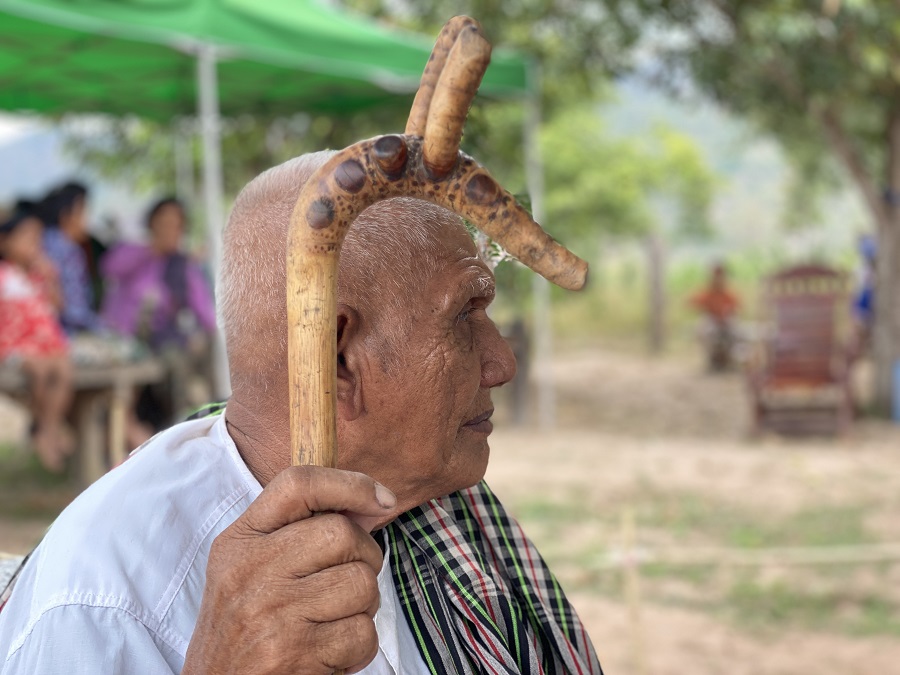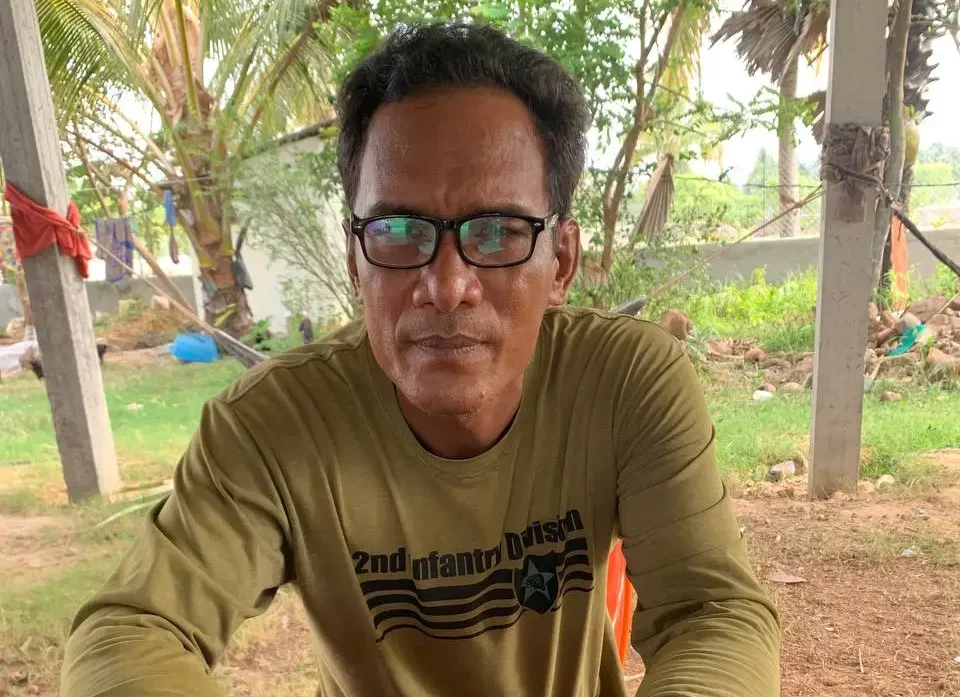Imagining Oneself in History
by Lim I-phing and Chey Chansineth
Documentation Center of Cambodia
CamboCorps, Group 1
It is difficult to imagine one’s self in history. What would this time period look like? If I lived during the Khmer Rouge, what would I experience? What would I feel? How would I act or react? These are questions that inevitably arise when CamboCorps youth volunteers interview survivors from this time period. Interviewing the survivors of the Khmer Rouge gives CamboCorps volunteers an opportunity to not only reflect upon history but also reflect upon how they would feel, act, or react if they were alive during these times.
The Khmer Rouge, led by Pol Pot, took power in Cambodia in 1975 and implemented a radical communist agenda, seeking to create a completely self-sufficient, agrarian society. The regime forcibly relocated millions of people from urban areas to the countryside and abolished money, private property, and religion. Those deemed enemies of the state, including intellectuals, professionals, and religious leaders, were targeted for execution, and an estimated 1.7 million people died from starvation, overwork, or execution during the regime’s four-year rule. Life would be characterized by fear, uncertainty, and constant surveillance, with no guarantee of safety or basic human rights.
In the month of March 2023, CamboCorps volunteers, working under the supervision and support of a staff from the Documentation Center of Cambodia, Phat Chansoneta, went to Bak Nim village located in Kampot province to hear the stories of survivors, with the hope of having a better understanding of the fear and other emotions that gripped people during the regime’s four-year rule.
We navigated a winding path to reach a villager’s house. The residence was situated in a remote area, surrounded by trees. The owner, Mr. Pav Rith, is 53 years old and he resides in Bak Nim village. He serves as the village’s pastor. During the period of the Khmer Rouge, he was a young student, and he was assigned to collect animal waste for use as fertilizer. He had completed his studies up to the 8th grade. He evaded the conflict by seeking refuge in the mountains, and it was only after the liberation in 1979 that he decided to return to his hometown. He married in 1986. Sadly, he lost three siblings on his wife’s side. Fortunately, he did not suffer any loss on his family’s side.
After our discussion with Mr. Rith, we began to walk further into the village area, and we marveled at the stunning mountains and streams that the village had to offer. Eventually, we arrived at the residence of Mrs. Chhuok Sophat, a 62-year-old woman who resides in Bak Nim village. She spends her days caring for her grandchildren. During the Khmer Rouge regime, she endured extreme exhaustion and starvation. The grueling circumstances prompted her to flee to Kampot, where she bore witness to gruesome scenes of death and decay that left an indelible imprint on her psyche. Mrs. Sophat longed for the swift end of the regime, so she could return home and resume her life. Despite her aspirations, she was only able to attain a fourth-grade education due to being deployed to a mobile unit brigade in 1976. While tending to crops with her grandmother, she observed people being taken away to be executed. They had their hands bound from one wrist to the other. Though the sight was harrowing, she dared not gaze upon it, because she was fearful that she too might be met with a similar fate.
Finally, we chanced upon a modest hut that appeared isolated and solitary. Disembarking from our van, we were greeted by the survivor with great enthusiasm. Mr. Koem Reng is 59 years old and he also resides in Bak Nim village. Similar to the other survivors’ stories, he stated he had to abandon his studies when the Khmer Rouge seized control of the country. As part of the children’s unit, he toiled relentlessly, performing arduous tasks such as lifting soil to construct dams in Steung Phe. Every day seemed like a battle for survival, and Mr. Reng clung to the hope that the regime would end soon. He was diligent and refused to be idle, knowing that any laziness could result in execution. If a person appeared to be lazy or less than productive, then he could be expected to be used as an example to others in the group.
We also heard from other stories:
Nuon Beuon
CamboCorps volunteers had the chance to meet some people from Bak Nim village, in Kampot province. On the road, we passed by this particular house, which was as small as a hut. The walls were covered with giant metal plates and we decided to stop and greet the villager who lives there. We noticed the lady’s clothes were hanging against the metal plates as if she didn’t have a closet or drawer to keep her clothes properly. The lady’s name is Nuon Beuon, and she is a 60-year-old farmer living with her daughter and nephew. She mentioned she never wanted to be sick as a preface to her story. She told her story about how, during the Khmer Rouge, she was able to study until the 4th grade at which point, she was expected to help her parents with farming. Angkar then had evacuated her to a children’s unit, and she was assigned to dig canals and build dams like many other villagers. She stated how sad she was that she lost so many relatives like her uncle and siblings. Afterwards, Angkar forced her to marry a man by and she then had to evacuate from Pun-ley village to what is now called Bak Nim village.
Keo Sarom
As the team walked through the dusty streets of the small village, we couldn’t help but notice an old man sitting outside his simple wooden home. He wore a basic stripe button-up shirt, and his face was weathered from years of working in the fields. My team approached him and introduced ourselves as CamboCorps volunteers who were interested in learning about his life during the Khmer Rouge and his current state. The old man, who introduced himself as Keo Saram, 72 years old, welcomed us into his home and he began to share his story. During the Khmer Rouge, he was a soldier in Prey Veng Province. After the liberation of Phnom Penh city, sometime around 1983, he retired as a former soldier. He also mentioned losing 2 younger siblings. As I spoke with Mr. Sarom, I couldn’t help but be struck by his quiet strength and determination. Despite the challenges he faced in his life, he remains deeply connected with his past and hopes the regime never returns.
An Kum
My team and I walked through the narrow, winding streets of the small village, and I couldn’t help but notice a grandma sitting outside her humble wooden home. She looked up and with a warm smile she greeted the team. I approached her, and introduced ourselves as CamboCorps volunteers who wanted to interview her about her life. As we sat there, surrounded by the sounds of chickens clucking and children playing, the grandma’s warmth and hospitality shone through her voice. Her name is An Kum, and she is 75 years old. She told us about the one thing she will never forget about the Khmer Rouge period—the day when she thought she was going to be murdered. A man ordered her to work in the fields and she was assigned to work with an older people’s unit. She talked back to them unconsciously by saying, “why can’t you do this work?” She noticed, amidst her thoughts that the man who ordered her to work continued to watch her and he even took time to intensely stare at her work. She recalls feeling he was judging whether to have her killed. She never forgot this day. It remains a vivid memory to this day.
END


